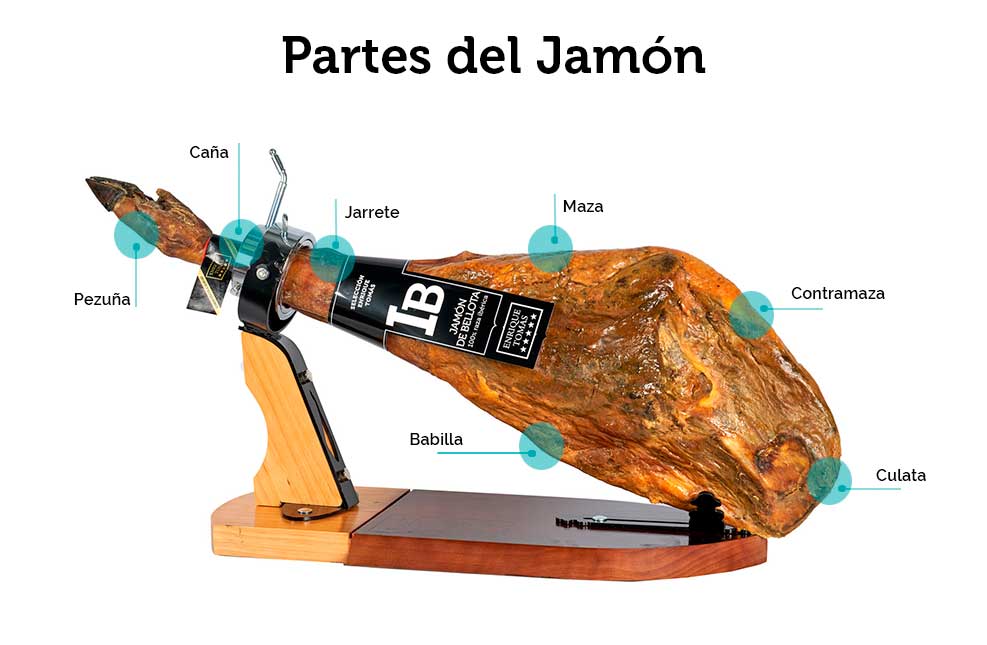
Caña of Jamón
“The “caña” of the Spanish jamón is an important part of the Iberian ham, a typical and emblematic product of Spanish gastronomy. The “caña” is the part closest to the pig’s leg and is recognized for its stylized and narrow shape.
The “caña” of the ham is a fundamental part for the identification and classification of Iberian ham. In fact, one of the main characteristics taken into account to differentiate the different types of Iberian ham is the weight of the “caña”, which tends to be greater in higher quality hams.
The “caña” of the ham, like the rest of the piece, is cured and dried for a period of time that varies between six months and several years, depending on the type of ham. During this process, the “caña” becomes harder and acquires an intense and deep flavor that characterizes Iberian ham.
When it comes to cutting the ham, the “caña” is an important part because it can help the cutter to hold and manipulate the piece while the cut is made. In addition, the “caña” is a highly appreciated part by ham lovers, as it usually has a higher proportion of infiltrated fat and, therefore, a more intense and juicy flavor.
In summary, the “caña” of the ham is a fundamental part of Iberian ham, recognized for its stylized and narrow shape, and for its importance in the classification and identification of different types of ham. In addition, the “caña” is a highly appreciated part for its flavor and juiciness, becoming a true pleasure for jamónlovers.”



